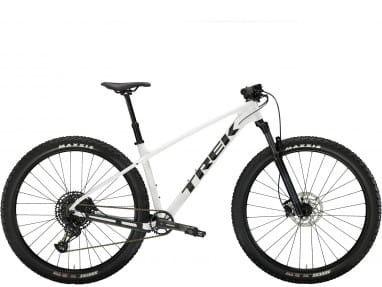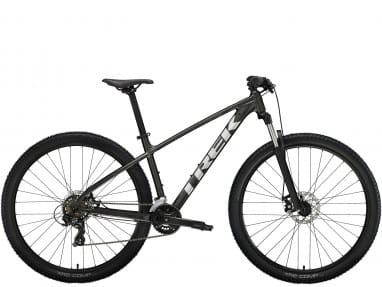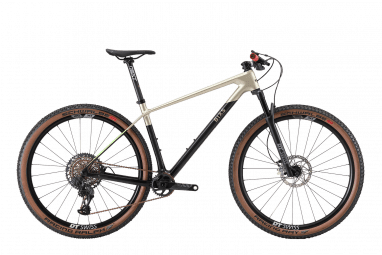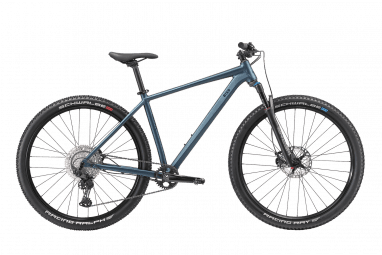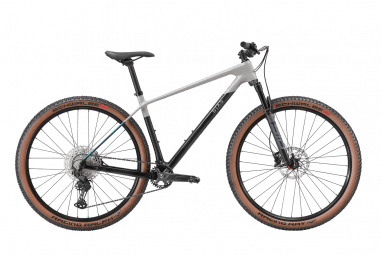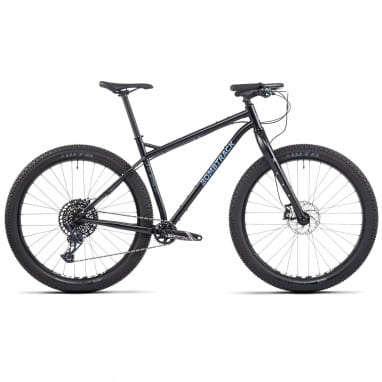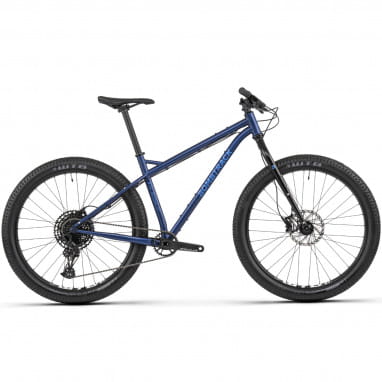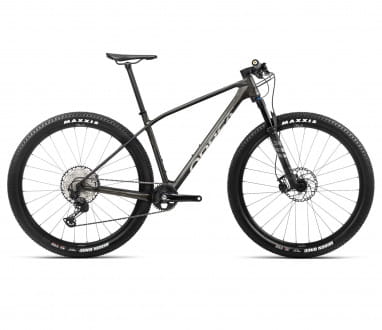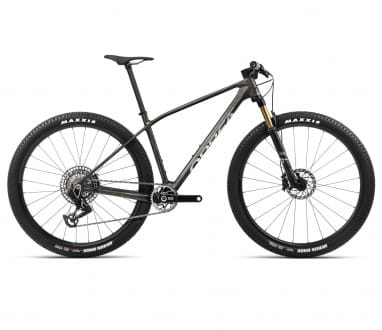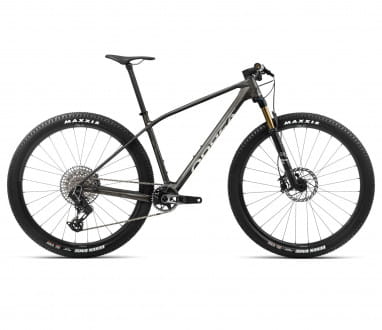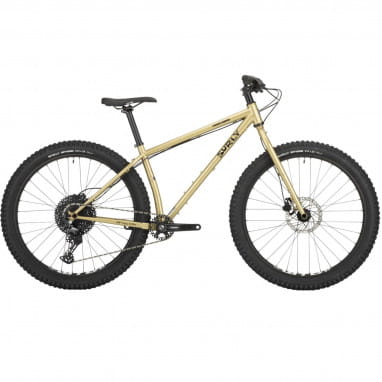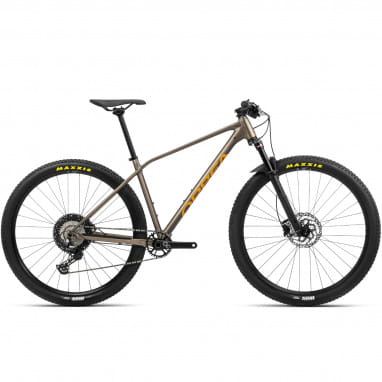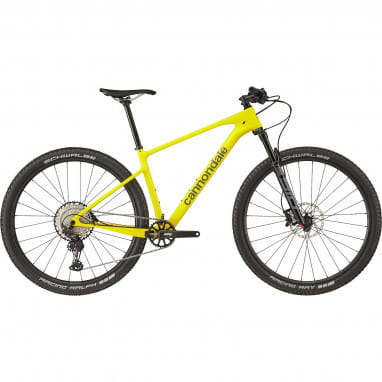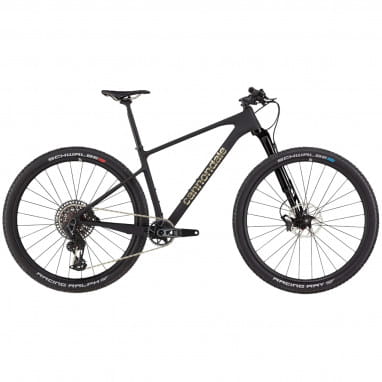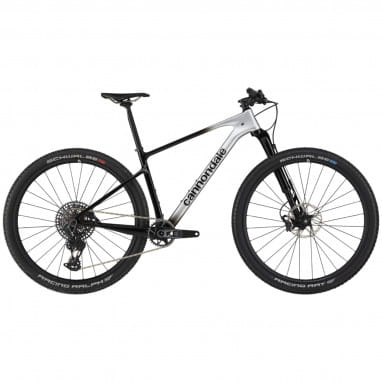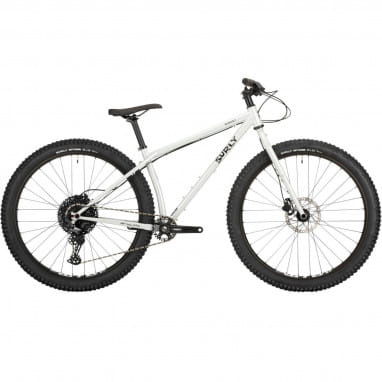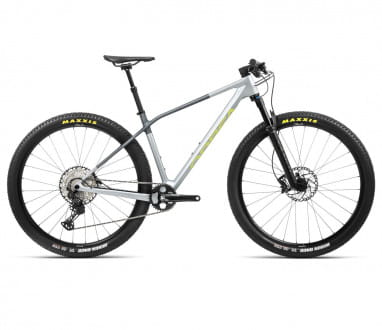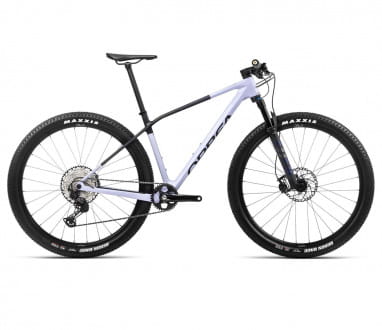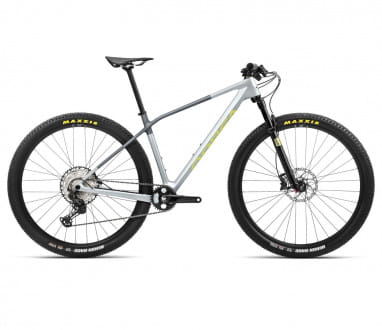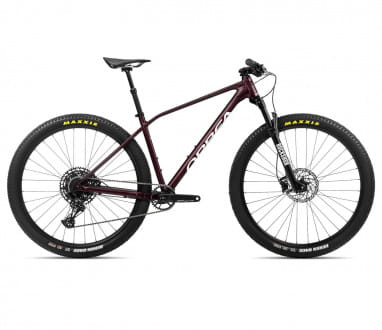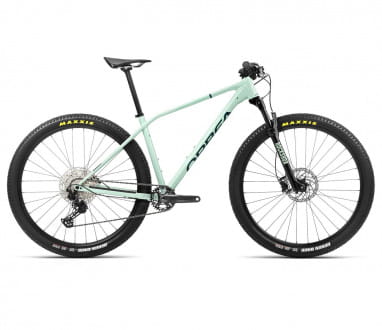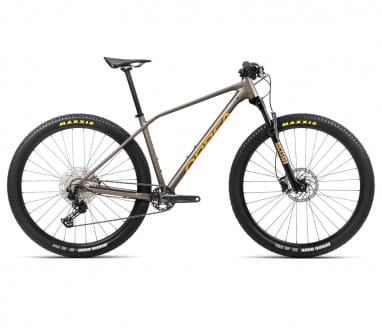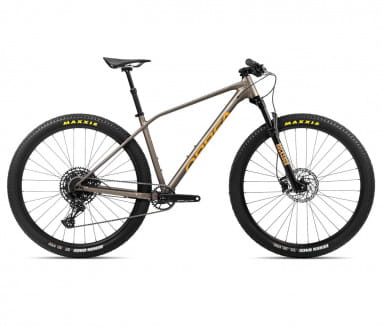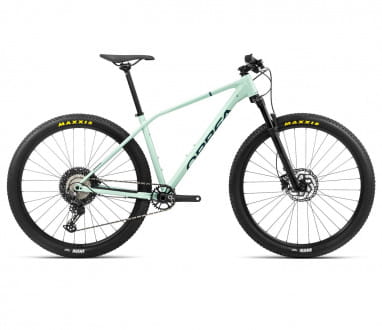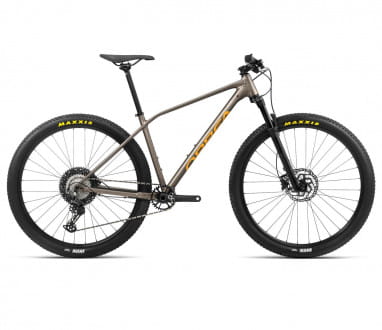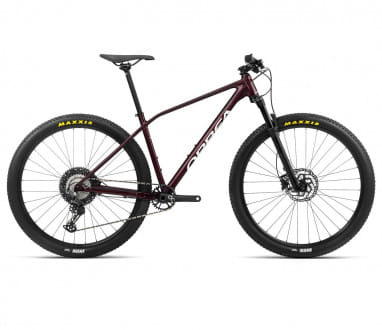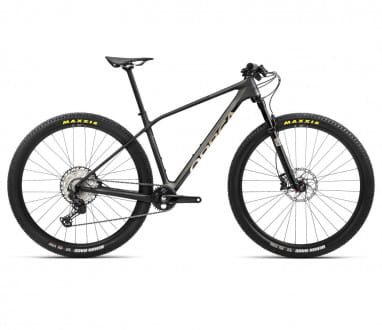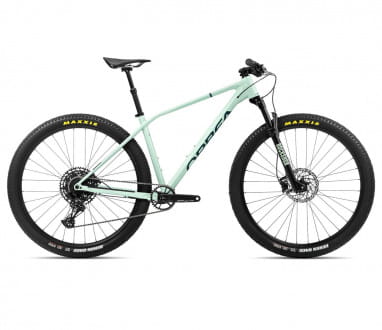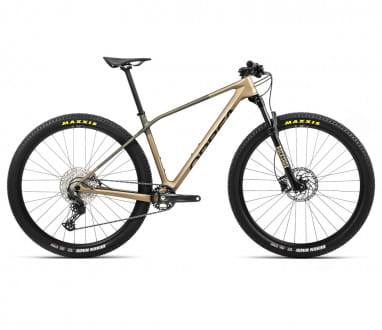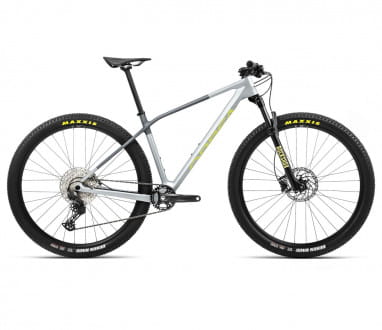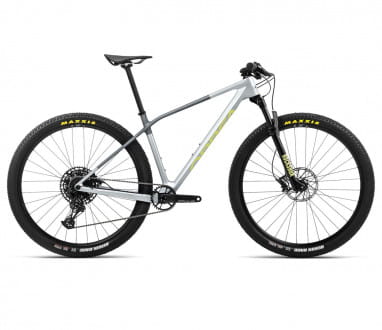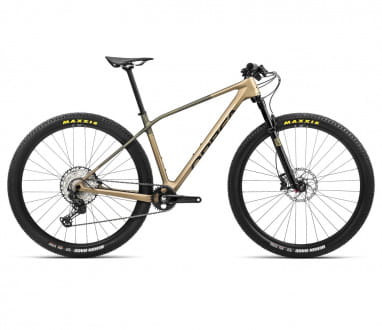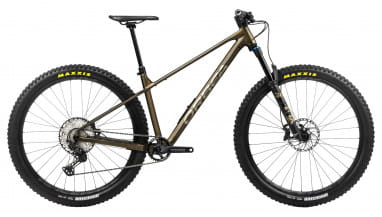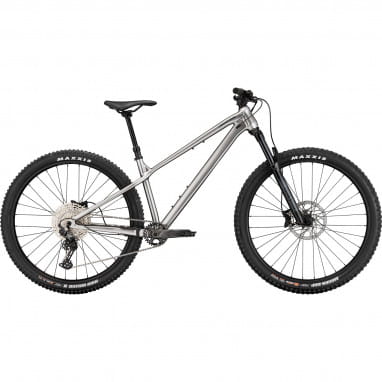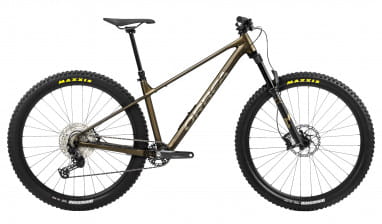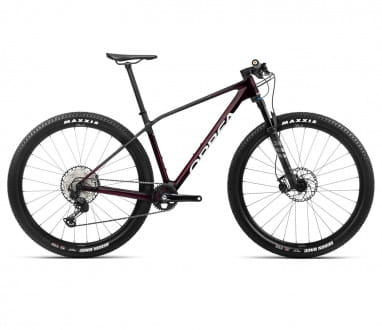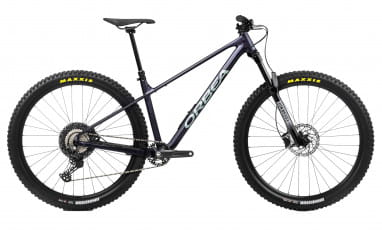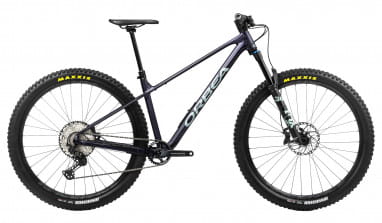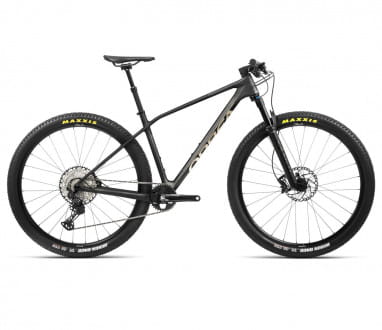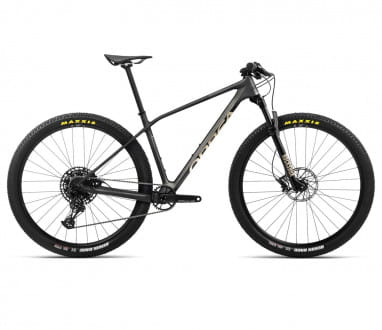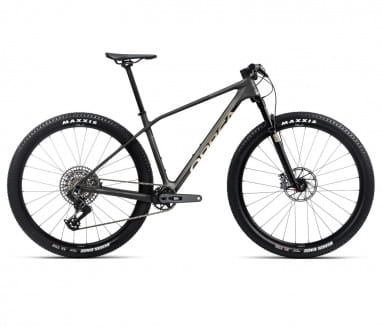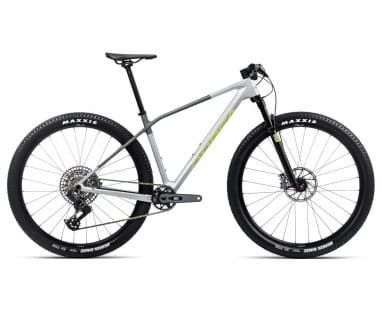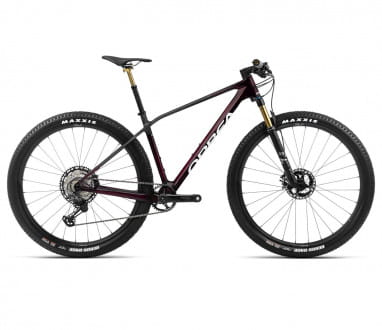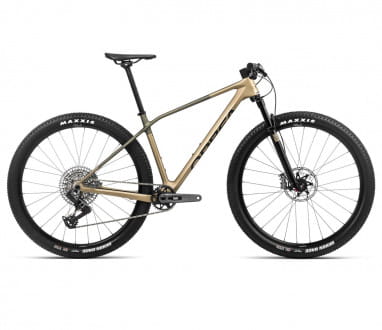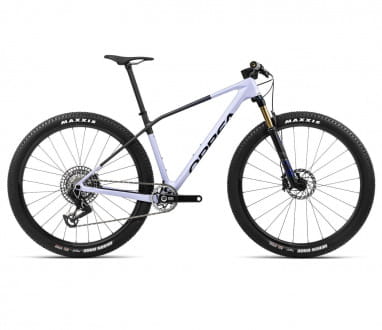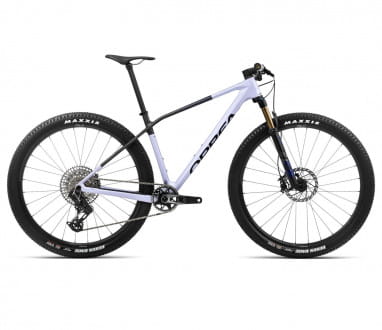A hardtail represents purism in mountain sports, it feels direct, dynamic and pure. It works great on all the ups and downs of a landscape with hills, and lets you tackle “real” mountains as well, given that the surfaces there are reasonably well-leveled. Thanks to its stiff frame it readily builds up speed, while at the same time it will also happily cope with loose surfaces and obstacles. But what exactly is a hardtail and why can't you actually answer this question without also taking a closer look at fullys?
This is a hardtail - interesting facts about unsuspended mountain bikes.
“Hardtail mountain bike”, this tells you what it's all about. Slopes. Ascends and descends. However, the slope is not really decisive, it's more about the terrain. You can go uphill ‘til your head spins, you can speed downhill to get your daily adrenaline kick. But you don’t have to, there are excellent mountain bike parks in Europe’s flatter parts.
Mountain bikes are at home off of the road, they like to inhabit unpaved terrain. River beds, rubble, forest trails with lots of roots and bumps, that’s mountain bike terrain.
No other bike category offers so many specialized bikes, one is suitable for uphill, the next one more downhill oriented, while bike number three likes to speed cross-country. To buy the right mountain bike, you must first and foremost inspect the terrain ahead. And then you have to ask yourself: Do you want to go forward or offroad?
What is a hardtail mountain bike?
A hardtail is an off-road specialist, and the gearshift, tires and suspension fork make sure of that. Unlike a full-suspension bike (in Germany we often call it a “fully”), it has no additional frame suspension. It has a rigid rear end, hence the name. It rides more efficiently than a fully-suspended bike, because there is no frame damper that swallows a lot of energy. In comparison, a hardtail is quicker and cheaper. It requires less maintenance and service. It is also significantly lighter.
Hardtail or full-suspension bike?
Let's first clarify the most important question first: hardtail or fully suspended bike? The short comparison of the two bikes helps here. A hardtail is an off-road bike without additional suspension, a fully has a shock in the frame. Roughly explained, it's like this: if your focus is on the distance covered, a hardtail is the better choice. If you want to pull off as many stunts as possible along the way, a fully is more your thing. Fullys are more jumpy and there's really no terrain - except for steep rocks perhaps - where they can't handle. Hardtails can also be ridden offroad, but the terrain shouldn’t be quite as rough. Instead, the focus is on efficiency, a hardtail likes to go fast. But even a hardtail is not just a hardtail!
Marathon MTBs: Don't worry, you're not supposed to run, we’re still talking bikes here. If you want to gather miles on your hardtail, a marathon hardtail is perfect for you. Endurance racing is the magic word here.
Race MTB: See above, only faster. You ride long distances off-road, and you do it fast - buy one of our cool racers! These bikes are designed entirely for top speeds.
Trail hardtail: A trail hardtail is the clown amongst hardtails. It comes along completely in the serious garb of a long-distance runner, but it likes to bounce, jump, drop and jump and rides (almost) like a fully suspended bike.
XC Hardtail, Cross Country Hardtail: Little suspension travel in the fork and a lot of stiffness in the frame, you can easily shoo your XC bike over long distances.
All Mountain, AM: More and more hardtails are currently walking on the wild side, meaning they’re busting into classic fully territory. For many years, all-mountaincalled for frame shocks, because if you want to conquer the whole mountain, a bike with full suspension is basically not the wrong choice. But jumpy hardtails can handle that quite well, too. Let's just call them "almost all-mountain."
Dirt bikes: At first glance, dirt bikes don't look like mountain bikes at all; their idiosyncratic geo somehow doesn't quite want to fit in with the well-balanced mountain bike frames. But the bottom line is that a dirt bike is a hardtail - with a somewhat weird seating position and a very specific area of use.
However, the designations of the bikes are not written in stone, often the differences are hard to spot. Each manufacturer labels the bikes somewhat differently, calls them this or that or sets a different focus.
What does "no suspension" mean?
First of all, there is a misunderstanding that needs to be cleared up: “no suspension” does not mean "completely without damping" here. A hardtail may not have a bouncy frame shock, but it does have a suspension fork - at least about 99.9% of all hardtail bikes do. There are mountain bikes with no shocks at all, but good luck finding one. Also, hardtails, like all MTBs, run on fat tires, which add extra cushioning to your ride.
The suspension fork
The suspension fork dampens uneven ground, it also helps your bike to stay on track. There are different suspension systems at work inside a fork. You will find only few suspension forks with an elastomer damper today. In cheaper suspension forks, a steel spring compresses when the ground gets rough. On a high-quality hardtail you’ll usually find air suspension forks. These forks are particularly lightweight, they also bring numerous options to adjust the fork to your very individual preferences.
> If you want to know more about MTB forks, you should visit our suspension forks. There you will find a lot of useful information.
The suspension travel
How much travel does a mountain bike need? Good question - bike nerds can talk their heads off about this topic! How much travel you really need depends on various factors, especially on how demanding your routes are. On the hardtail, suspension travel has settled at 100 to 150 mm – always depending on your preferences, terrain and also current trends.
The perfect tires for a hardtail MTB
All mountain bikes are built to move forward off-road and on dirt tracks. That's why they have big tires covered with a chunky tread pattern.
- With many bikes, you have the option to mount wide or even wider tires, to find out more, check the tire clearance information in the MTB's specs. It’ll tell you how much tire width the manufacturer recommends.
- A bike that is meant to cover large distances – an endurance bike – rolls more efficiently on narrower tires, so tires 51mm or 2.1 inches wide are common here.
- The more technical the terrain under your tires gets, the wider the tires should be. On most mountain bikes, up to 2.6 inches or 61mm are possible.
- When it comes to tires, the following rule of thumb applies: the narrower the tires, the faster and more efficient you ride. Wider tires offer better dampening, they also have better grip. Just don't forget: fat wheels also get heavier!
Which tire size is the best for a MTB hardtail?
You can buy hardtail MTBs with different wheel sizes. If you don't want to commit, some models also give you the option to ride with two wheel sizes.
- 27.5 inches: For years, agile 26-inch hoops were the standard for mountain bikes, currently this tire size is totally “last season”. 27.5 inch tires provide enough agility for technical rides, they are lighter and on brisk rides you benefit from the snappy acceleration.
- 29 inch: The bottom line is that a hardtail is the bike for long distances. For tricks, acrobatics and other stunts, you’ll need a fully-suspended mountain bike. That's why you will find 29" tires on many hardtails. Great acceleration and smooth running are the decisive arguments here. On the other hand, they are less agile and maneuverable.
Carbon or aluminum?
Carbon frame or an aluminum bike - for many bike buyers, this is primarily a question of money. Carbon is undoubtedly the more posh material, which is always reflected in the price. Buying a carbon hardtail mountain bike is simply more expensive than getting an aluminum MTB. On the other hand, carbon frames are significantly lighter than aluminum versions. Until a few years ago, carbon frames were considered rather fragile and were therefore thought not suitable for tough offroad action. Thanks to improved manufacturing techniques, carbon frames are now sturdy enough for mountain bikes. Aliminium is still cheaper, but also heavier.
The dynamic geometry of a hardtail MTB
The geometry of a mountain bike not only affects your riding position, and how comfortable the bike feels. It also has a say in how the bike rides. A little further up, you have read how many different hardtails you can buy here in the BMO online store. Every manufacturer builds their bikes a little differently, each model setting its own focus. A lot of reach, a large wheelbase and 29ers make a hardtail a long-distance runner. A short wheelbase and 27.5 inch hoops lead to a more maneuverable bike. There are downhill-oriented geometries, mountain bikes with a typical XC geo or versatile all-rounders. Just check the specifications of our hardtails, there you will find more information about each individual model.
By the way, there are fewer and fewer mountain bikes specifically for women and men, a good fit depends more on the frame size and geo than on the gender of the rider. There is a bike with feel-good geometry for every woman and man, most bikes today are unisex models.
> However, you can stop by our mountain bikes from Liv. Liv builds bikes exclusively for women.
Durable components on the hardtail
- Hardtail gearshifts: 1-speed gears are in vogue, you've probably already noticed. Those groups have 11 or 12 gears instead of 30 gears but still a large range, which supports you perfectly in any terrain, but still saves a lot of weight. That the drive train needs fewer parts, less maintenance and also costs less, will certainly not bother you.
- Hardtail brakes: Disc brakes have become standard, you get a set of discs on every hardtail. Cheaper models brake mechanically, but mostly hydraulic disc brakes are mounted.
- What you will look for in vain on a hardtail is lots of comfy everyday equipment. After all, it’s still a mountain bike! Lights, rear rack or kick stand - no way! This makes the bike not only lighter, but also cheaper. If you miss any of the add-on parts, you have to dig up your tool kit and simply retrofit them.
E-Hardtails
There are more and more e-bikes, that's no secret. Especially since there are drive units built specifically for MTBs, the number of E-MTBs is increasing considerably. If you want to treat yourself to a little support every now and then, a hardtail with an electric engine is a fine thing. Especially if you want to get uphill without queuing at the lift, an e-bike is a fantastic alternative. Light e-bikes, which were first spotted in 2021, are a particularly interesting alternative. The idea behind them is excellent! Here, the e-bike only has a small, light, inexpensive drive unit that helps you briefly in tight (or steep) spots, otherwise you ride "bio".
All in all, a hardtail is a sporty all-rounder with good propulsion, it works great off-road, on longish bike tours and also on your everyday errands.
Is a hardtail mountain bike the right bike for you?
If you're going to have surfaces under your wheels that don't turn out too nasty, and want to arrive eventually, you should buy a hardtail. Hardtails usually balance dynamic propulsion with the ability to leave the paved road behind. The more you spend, the better and more durable the components get, also the radius expands. But regardless of your budget, you can count on a sturdy and durable bike. The fact that it requires little maintenance is another advantage.
A lightweight bike is especially handy if you need to carry it down to the basement for safe parking, for example, lift it into the train or onto a bike rack on your car. If you appreciate a bike that offers easy handling, a lightweight hardtail is exactly your cup of tea, especially if you treat yourself to a carbon ride.
The affordable price makes hardtails an interesting option for those who are new to the world of MTBs and want to get started with an affordable bike.
You want to enjoy your weekend on the trail, but your bike must also be able to go the way to work during the week? Then you'll really appreciate the off-road capabilities and efficiency of a hardtail! By the way, you can retrofit a hardtail with mudguards and a rear rack, which increases its everyday efficiency considerably.
You’re planning to make the occasional bike trip with the whole family? Even then a hardtail is a really good idea, simply mount a child seat, luggage rack or even a child trailer, a hardtail is significantly cooler than a trekking bike, but also significantly more practical than a fully suspended bike.
By the way, hardtails are also great for training laps and endurance training!
A hardtail is:
- suitable for longer distances and bike tours
- speedy, thanks to good propulsion
- suitable for off-road and asphalt
- practical and suitable for everyday use
- a great training and fitness bike
- inexpensive
- a good choice for beginners
How does a hardtail ride?
A hardtail mountain bike likes to go up and downhill, and it will not wear you out doing so. Depending on its geometry, you’ll be riding in a more or less stretched riding position. The suspension fork provides comfort while the frame is rather stiff, after all, you want to move forward, don’t you? The wide range of gears let the bike climb easily and open up all kinds of terrain for you. Where a fully suspended bike becomes “spongy” and nervous because of its frame shock and a lot of suspension travel, a Hardtail remains stable. It provides direct steering with an excellent power transmission.
The specific geometry and the tires determine whether your hardtail runs rather quickly or is agile or playful.
The weight of a hardtail bike influences the riding characteristics, but also the handling of the bike and there are always pushing passages or shorts parts where you have to carry your bike to consider! A lightweight hardtail weighs about 8 to 10 kg, some models are also a few kilos heavier.
The frame material not only affects the price and weight of the bike, it also has an impact on the comfort the frame offers, because depending on the aluminum alloy and carbon mix, the frame gets more flexible or turns out more rigid.
Of course, you need a hardtail if you want to participate in competitions and races in disciplines like XC or Marathon.
Maybe comparing bikes makes your choice a little easier: If you want to be more comfortable, a trekking bike would be a good idea. If you want to be fast, you can ride a road bike or a gravel bike. The suspension makes a fully rideable in difficult terrain.
The riding characteristics of a hardtail:
- dynamic and snappy or aggressive
- either smooth-running and fast or agile
- sporty and low or relaxed riding position
- gear shift with a wide range
- low weight for easy handling
What are the advantages of a hardtail?
It’s fast, but also capable of off-road riding. It’s lightweight, but at the same time it has some suspension. It’s sporty, but suitable for everyday use. A hardtail MTB is comfortable to ride on gravel, in the forest or on dirt roads. It puts on miles on paved surfaces with considerable speed, but also plows uncompromisingly through loose ground.
You want to head out on bike tours without a map, and just ride wherever the moment guides you? The end of the bike path should not be the end of your tour? Then a hardtail is the perfect bike for you; it can move forward on almost any surface. Offroad doesn't mean "Turn around!", but "Let the fun begin!".
It's still a true mountain bike, meaning it is an excellent climber, so it can be ridden in the real mountains. But if you don't want to let your bike gather dust before and after your vacation in the Alps, you can also use a hardtail as a means of transport in the city or around your village.
With a few add-on parts you can make it ready to go bikepacking or turn it into a real commuter bike, many hardtails offer enough riding comfort (and all the mounting points) for this.
A hardtail is therefore above all versatile!
A huge advantage that hardtails have to offer, compared to other bikes, is their low price. Even top manufacturers have a few simple hardtails for a few hundred euros in their catalog. Hardtails are also lightweight and don't need much service. A rigid frame and 1-x gear shift require little maintenance, which makes them popular with anyone who wants to get on the bike spontaneously without having to think much about it.
The advantages of a hardtail:
- versatile
- can be ridden off-road, but also work on asphalt
- perfectly suited for city and country
- combine sports and everyday life
- low maintenance
How much does a mountain bike hardtail cost?
Hardtails are cheap, you have already read that above. But how much will a good, fun hardtail really cost?
The entry-level of hardtail mountain bikes actually starts at a few hundred bucks. If you rarely use your bike and don’t mind it rattling and squeaking a bit, there is nothing wrong with buying one of those hardtails. A cheap hardtail is also a good choice as a backup. Off-road trips will ask too much of these bikes, however, because the components will probably be not first-class. You’ll buy a somewhat more durable bike from 800 euros to 1000 euros. With those hardtails you can plan day trips or leave paved paths behind.
The middle class ranges in hardtails from 1200 euros to 1500 euros. Here, the gear shift will be of better quality, you’ll certainly notice that on off-road tours. You also get better brakes. If you want to master slopes and inclines, you should not buy a cheaper bike, because not enough braking power is not only problematic here, in a worst case scenario it becomes dangerous!
Top-notch hardtails are available from about 2000 euros and up. The components are better and more durable, they can withstand greater strain and are therefore also well suited for off-road riding. And it’s the better materials that do the trick - the bikes are not only becoming more robust, mostly they are also getting lighter.
The costs:
From 800 euros to 1000 euros you get a cheap hardtail
The middle class goes from 1200 euros to 1500 euros
Top hardtails are available from about 2000 euros
What should you look for when buying a hardtail?
If you have decided to buy a hardtail, the next thing you need to think about is which hardtail will move in with you. Here are a few questions that will help you choose:
How long do you plan to ride?
The longer your tours, the more buying a good hardtail will pay off. The components will be more durable, the breakdowns less frequent and the riding comfort much greater. If you rarely hit the saddle, and then just ride to the next watering hole, an entry-level hardtail is sufficient. For one or two hours of riding time, a middle class bike is perfect, for longer tours you should treat yourself to a good bike. Especially on long distances through the sticks the last thing you need is a break down, right?
Long wheelbase, big wheels?
You have already read this further up: For long distances, a mountain bike with a large wheelbase is ideal; in demanding terrain, a bike with a shorter wheelbase is more maneuverable. Large wheels make the bike run smoothly and provide propulsion, smaller tires make it more agile and accelerate easily.
What are the surfaces like?
A mountain bike really loves "bad" surfaces, that's what it's there for. A good quality frame and components pays off here, the bike rides more comfortably, causes less trouble and it will last longer, no matter how bad you treat it.
When should you buy an expensive hardtail? Or a cheap fully suspended bike?
A hardtail is cheaper than a fully, it skips some components, the frame construction is much simpler and therefore cheaper. If your budget allows for an expensive bike, you do not necessarily have to buy one with a frame suspension! It has advantages to invest all the money in a better hardtail. For the same price you get an ok fully or an excellent hardtail. Durable components, perfect workmanship, great brakes, a top groupset – sounds kinda tempting, right? As the price increases, the durability improves and the riding comfort also increases.
How to find a hardtail in the right frame size for you
Mountain bikes come in many different fits and frame sizes. To help you choose the right size for your order, we have a frame size calculator for you on our blog that will help you determine the optimal bike size (German only).
Buy a mountain bike from the best brands!
We have mountain bikes made by Bombtrack, Cannondale, Giant, Trek or Ghost in our online store. There are also ladies bikes from Liv. All our brands are known for their great quality bikes. You still don’t know which bike you want to buy? Here on BMO you can easily compare different bicycles. We explain what mountain bikes, gravel bikes, urban bikes and city bikes, touring bikes, dirt bikes, road bikes and e-bikes can do. We'll help you buy a cool kids’ bike for your kids. Just read our buying guides and you'll know which bike you'll be happy with!

